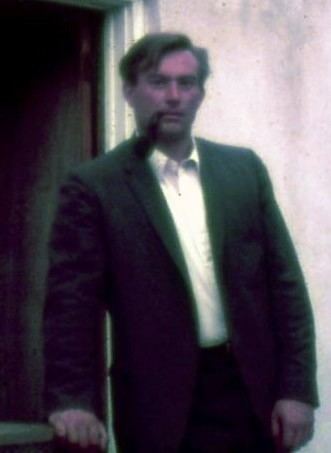Name Peter DeMarco | ||
 | ||
Peter DeMarco On His Wife's Death
Peter Thomas DeMarco (March 6, 1932 – October 26, 2005) was an American medical doctor who graduated from Albright College in Pennsylvania and achieved his doctor of medicine degree in 1957 from Hahnemann Medical College of Philadelphia, Pennsylvania.
Contents
- Peter DeMarco On His Wifes Death
- Professional distinction
- History
- Theory and proof
- Coordinated healing
- References
A resident of Pine Hill, New Jersey, he had a research laboratory and medical practice there.
Professional distinction
DeMarco received professional distinction by advancing scientific research on diabetic complication reversal, chronic wound healing, human cell regeneration and scar tissue reduction by combining procaine with polyvinylpyrrolidone to produce a cell regeneration treatment therapy. He received two patents for his work, the first was titled: Treatment of arteriosclerotic diseases. and the second was: Method of treatment of animal and human tissues damaged by burns and frank visible gangrene. DeMarco was inducted into the Italian-American National Hall of Fame on September 9, 1984 for his scientific and humanitarian work.
History
Pharmaceutical company Johnson & Johnson's Ortho Research Laboratory wrote that case histories of his therapy, "were quite remarkable and your concepts most intriguing" and ICN Pharmaceuticals replied, "The results you have obtained with this drug in the treatment of gangrene have been most spectacular" but DeMarco was never able to commercialize the therapy beyond his own medical practice. Swiss pharmaceutical company Debiopharm S.A. replied, "Drug induced cell regeneration appears to be a revolutionary new form of treatment which is bound to be perceived as highly controversial by several regulatory agencies. We are not in a position to take the considerable time and risk involved in convincing the bureaucrats." Thus although intrigued, the pharmaceutical companies never showed a serious interest in developing his product. Regenerative medicine was a new field at the time and DeMarco likened the companies' antipathy of his discovery to the history of penicillin; although discovered in 1928, penicillin was not mass-produced until 1941 when production became a top priority World War II project to reduce the infection casualty rate.
DeMarco's clinical use of a drug not approved by the U.S. Food and Drug Administration came to the attention of regulators in both New Jersey and Pennsylvania, leading to the suspension of his license to practice and the seizure of his supply of "Procaine-PVP". DeMarco's patients organized a patient advocacy group called S.O.S. (Save Our Shots) and filed suit to restore his license and regain access to his formula. Unswayed by the patients' pleadings, the regulators denied the motion and all subsequent legal attempts.
Theory and proof
DeMarco's regenerative medicine theory was that procaine enables protein de novo synthesis by acting on cellular DNA activity. His evidence was his human gangrene case study photographs. Although he had made hundreds of animal heart, liver and skin studies, he would always display his patients' results as validation. Believing that, "Theory is good, but in the end you have to produce patient results in a clinical setting." He would use time-lapse photography to demonstrate coordinated and accelerated healing while using his procaine-PVP formula. In the photo studies, certain wound healing processes appear visibly delayed while others look to be selectively accelerated in contrast to untreated wounds. He hypothesized that these processes were DNA controlled with procaine interaction. Equal to salamanders, starfish and similar life-forms, human regeneration would be possible by selective DNA gene expression. DeMarco believed his chemically induced partial limb regeneration, scar tissue repression and coordinated tissue repair was a significant step forward in human regenerative medicine.
Coordinated healing
DeMarco’s animal studies showed a healing phenomenon he termed "coordinated healing". Observing that animal wounds would heal differently when treated with his formula, he tried to explain his observations: excising a square inch of skin from a rabbit’s shaved back, he would allow it to heal normally while documenting its progress with time lapse photography. DeMarco than performed the same experiment while treating the rabbit with his formula. He observed that the untreated wound healed haphazardly; closing in a non-circular pattern with uneven levels and with infiltrating hair growth before wound closure. In contrast, the treated rabbit healed in a smooth circular pattern with even levels and only after wound closure would the hair begin to regrow.
DeMarco also observed this coordinated healing in humans with his gangrene patients. Despite being diabetic, the treated wound would heal correctly with minimal scar tissue. Even the toe’s print pattern would return. Hair growth and scar tissue were suppressed while select de novo protein synthesis appeared to accelerate. He deduced that this coordinated healing pattern was a result of procaine-DNA interaction since procaine has been documented to influence DNA synthesis in simpler life forms (DNA activation in sea urchin eggs) as well as humans (restores silenced gene expression). He had great hopes of treating head and spinal cord injuries to observe if the same coordinated healing effect would alter those patients’ prognosis as well as his gangrene patients.
